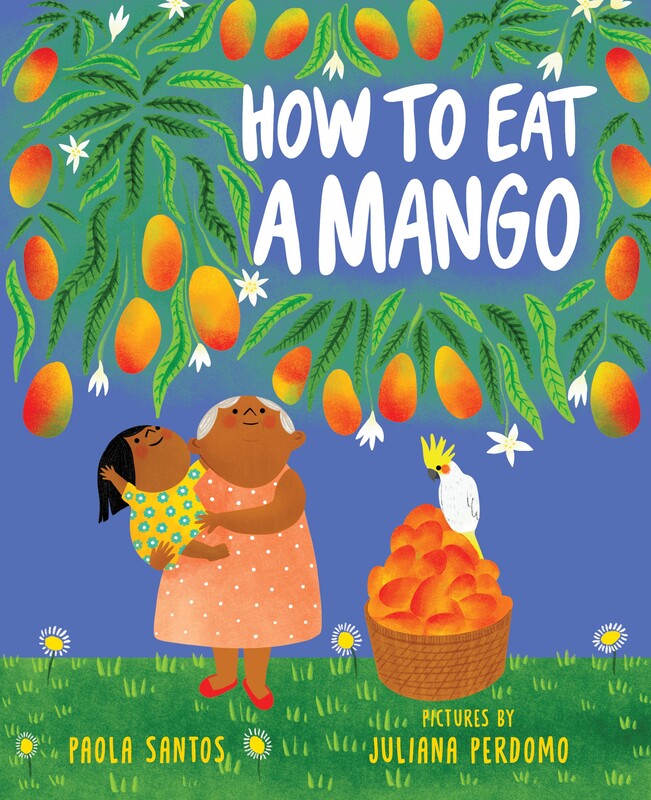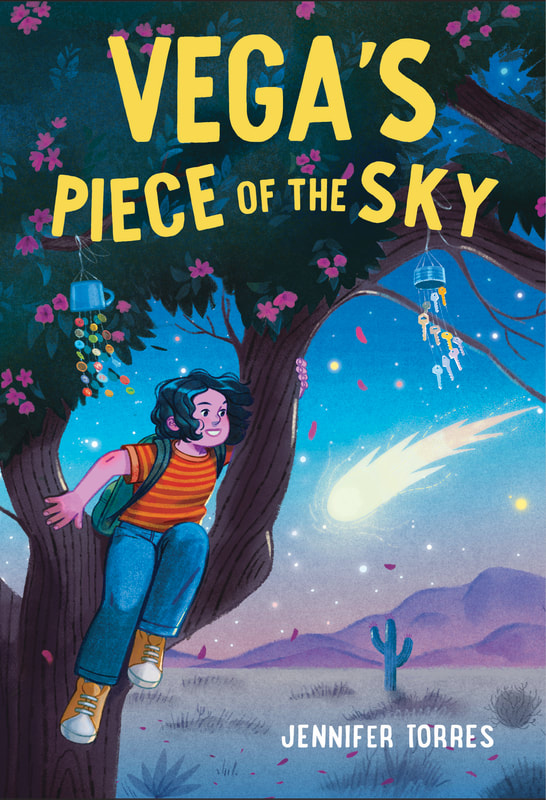|
Today we celebrate the book birthday of Bodega Cats 1: Picture Purrfect. We sat down with Musa Hilda Eunice Burgos to learn about the inspiration behind this book. Tell us a little bit about the book: In this illustrated middle grade story, Miguel Rosado wants nothing more than to see and draw the world… or, at least anywhere beyond the four walls of his family’s bodega in Washington Heights, where he has to work every day after school. For street-savvy and newly-adopted cat Lolo, spending all his time in the bodega sounds just perfect if it means he’s far, far away from the hungry, lonely nights he once spent in the freezing cold outdoors. But when Miguel ditches his responsibilities and lies to his parents about joining art club, his dream of juggling it all comes crashing down. Lolo will have to decide if he’s willing to be there for his new friend through anything—even venturing back into the frightful outdoors and busy New York City sidewalks. Can Miguel and Lolo trust each other enough to take on this adventure together?
Sounds exciting! Read more after the link...
0 Comments
Today we celebrate the book birthday of Grow Up, Luchy Zapata We sat down with Musa Alexandra Alessandri to learn about the inspiration behind this book. Tell us a little bit about the book: It is a funny, relatable middle school drama about two Colombian American girls who have always been BFFs—until sixth grade turns everything upside down. Luchy Zapata is starting middle school, and she’s muy excited. She and her two best friends, Cami and Mateo, will finally be at the same school. Luchy and Mateo will be in art class together, and she and Cami can try out for the same soccer team! As long as they’re all together, Luchy can handle anything. But Cami has been acting weird ever since she got back from visiting family in Colombia. She’s making new, “cool” friends who just seem mean. And suddenly, everything about Luchy and Mateo is too immature for her. Luchy is determined to help Cami remember how special their friendship is. They’ve been BFFs their whole lives, and that can’t just disappear in a poof of glitter! But…what if Cami doesn’t even want to be friends anymore? What a fun read! More after the link...
Today we celebrate the book birthday of MARIA MARIPOSA, by Karla Arenas Valenti, illustrated by Ana Ramírez González. We sat down with Musa Karla Arenas Valenti to learn more about the inspiration behind this book.
María Mariposa is a story about finding confidence, embracing identity, and recognizing that your unique self is more than enough. A gift from Mexico alights on María Mariposa’s windowsill on her first day of school in a brand-new country: “¡Una mariposa!” she says. With the butterfly, in comes Mexico magic. Filled from her toes to her new butterfly wings with memories of home, María knows exactly who she is and draws on her heritage to give her the courage needed for this very big "first". But when everything at school is different and strange, doubt chips away at María’s confidence. The place she comes from, the community she loves, the magic inside her...does any of it really belong in her new life in the United States? With courage and compassion, this picture book confronts the most difficult moments—and feelings—of being new, sweeping listeners up in a powerful celebration of the magic we each contribute to the world. Read more after the jump... Today we celebrate the book birthday of How to Eat a Mango / Cómo see come un
mango by Paola Santos, illustrated by Juliana Perdomo. We sat down with Paola to learn about the inspiration behind this book. Tell us a little bit about the book: Carmencita doesn’t want to help Abuelita pick mangoes; she doesn’t even like them! They’re messy, they get stuck in her teeth, and it’s a chore to throw out the rotten ones. But Abuelita adores mangoes, and patiently, she teaches Carmencita the right way to eat them. Each step is a meditation on everything Mamá Earth has given, and in the Earth’s love, Carmencita feels the love of her Mami, her Papi, her little brother Carlitos, and of course, Abuelita. When they finally bite in, the juice running down their arms, Carmencita understands. The mangoes are more than just mangoes… and she’s ready for another! That sounds so sweet! Read more after the link... Today we celebrate the book birthday of I Am La Chiva!: The Colorful Bus of The Andes. We sat down with Musa Karol Hernandez to learn about the inspiration behind this book.
Tell us a little bit about the book: I Am La Chiva!: The Colorful Bus of The Andes, takes readers through a day in the life of a hardy and colorful chiva bus in the rugged Andes Mountains of Colombia. This picture book is about community, teamwork, and love for one's land and people, is told in Spanglish verse from the point of view of the chiva bus. The stunning illustrations by Lorena Alvarez Gomez will delight readers with rich details and colors. A glossary of the Spanish words used in the story is included in the back matter. A Spanish version of the book will be released on August 27, 2024! I can't take my eyes off those gorgeous covers! Let's learn more... Today we celebrate the book birthday of Gloriana Presente, A First Day Of School Story. We sat down with Alyssa Reynoso-Morris to learn all about the inspiration behind this book. But first, a little bit about this picture book:
On the first day of elementary school, Abuela soothes Gloriana’s nerves by telling her stories from their family home in la República Dominicana. But as soon as Gloriana enters the classroom, the tropical scenery crumbles, and la música is replaced with English phrases she does not understand. When other kids approach her to play at recess, she freezes, uncertain about how to exist between her two homes, or how to make new friends between her two languages. Abuela recognizes echoes of her own immigration journey on this challenging day at school, and she gently guides Gloriana toward newfound confidence. This beautifully painted, imaginative picture book celebrates the magic of existing in-between and the transformative power of self-soothing to build confidence. Today, we're thrilled to share the cover to Danilo Was Here, a new middle grade novel written by Tamika Burgess (cover illustration by Noa Denmon) and published by Harper Collins.
Here's the scoop on Danilo Was Here: From the acclaimed author of Sincerely Sicily, Tamika Burgess, comes a timely coming-of-age story about a young boy’s fight to save his family and his dreams in the aftermath of the US military invasion of Panamá. Perfect for fans of Janae Marks, Adrianna Cuevas, and Chrystal D. Giles! Danilo Osorio Jr.’s baseball skills were once the pride of his father and entire hometown of El Chorrillo, Panamá. But that was then, and this is now… Following 1989's Operation Just Cause, a US military invasion that left his neighborhood decimated, Danilo couldn’t care less about baseball or the father who abandoned him for opportunities in the States. Now Danilo’s focus is taking care of his mamá and sister and trying to save them all from needing to relocate to a refugee camp. When Danilo unintentionally catches the eye of a baseball recruiter and is offered the opportunity to visit and train in California—the same place as his father’s last known address—he is tasked with deciding to go or stay. But if playing baseball could help him find his father and secure the extra funds his family needs, Danilo is willing to travel anywhere, even to the very country responsible for destroying his home. Between his tough-as-nails baseball coach, ultracompetitive teammates, and overly enthusiastic host family, Danilo’s plans encounter some curveballs. And when his turn to bat finally comes, he’ll have to decide what and who he’s actually fighting for. And now, without further ado... check out this horgeous cover! Today we celebrate the book birthday of Vega's Piece of the Sky. We sat down with Musa Jennifer Torres to learn about the inspiration behind this book.
Tell us a little bit about the book: The meteorite is just the latest thing to crash, uninvited, into Vega Lucero’s rest-stop hometown. But when she discovers how much a chunk of the space rock might be worth, she realizes it’s exactly the treasure she’s been hoping to find. And maybe a way to convince her mom not to sell the family store to big city developers to help pay for her grandpa’s medical expenses. Determined to find more pieces of the sky somewhere in the perilous desert wilderness, stubbornly independent Vega must set aside her distrust of outsiders to team up with Jasper, a would-be rival—and her own tagalong cousin Mila—on an overnight adventure to find more meteorites before the professional hunters who have descended on Date City do. But along the way, she realizes that she’s not the only one with the weight of the world on her shoulders. Jasper and Mila have their own secrets and worries that have brought them on this journey. Together, this ragtag group will ultimately discover that no treasure is big enough to prevent unwelcome change. But family and friends can help weather the unexpected that life brings. Sounds great, doesn't it? Today we celebrate the book birthday of Abuela's Library. We sat down with Musa Lisette Normal to learn about the inspiration behind this book.
Tell us a little bit about the book: Alfonso and Abuela love to spend Saturday afternoons finding books at the library and reading them together beneath their favorite oak tree. But when their beloved tree is cut down, can Alfonso transform the stump into something magical for their whole community—their very own neighborhood library? This uplifting story from award-winning poet Lissette Norman and illustrator Jayri Gómez shows us how to turn an unexpected setback into a happy ending: one with a beautiful sky-blue door and shelves filled with books for everyone to enjoy. What a moving story! Read more after the link... Today we celebrate the book birthday of Daughter of the Light-Footed People. We sat down with Belen Medina to learn all about the inspiration behind this book. But first, a little bit about this non-fiction picture book biography:
Experience a sixty-mile run with Indigenous athlete Lorena Ramírez. She runs in the traditional clothes of the Rarámuri, “the light-footed people,” to show that her people and their way of life are alive and thriving—outpacing runners in modern, high-tech gear and capturing the world’s attention. Lorena’s career as an athlete is an inspiring real-life example of the power of perseverance that will encourage young readers to follow their own dreams. |
Las Musas SpeakWelcome to our blog! Archives
July 2024
Categories
All
|













 RSS Feed
RSS Feed